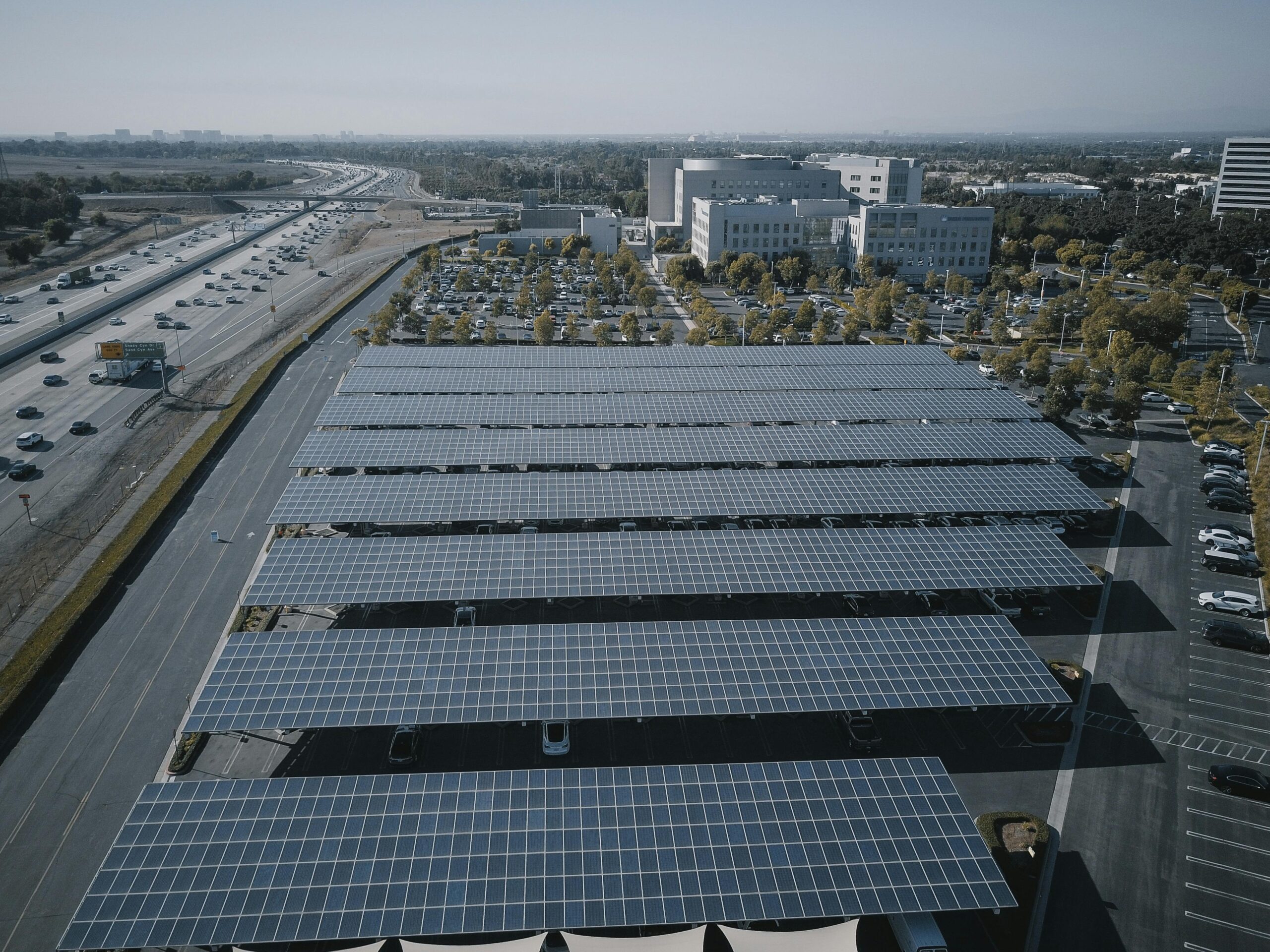Smart connected street lighting is transforming cities worldwide, blending energy efficiency with cutting-edge technology to create safer, more sustainable urban environments for millions.
🌆 The Dawn of Intelligent Urban Illumination
Urban infrastructure is experiencing a revolutionary shift as municipalities embrace smart connected street lighting systems. These intelligent networks represent far more than simple LED upgrades—they’re comprehensive platforms that integrate sensors, wireless connectivity, and advanced analytics to create responsive, adaptive urban environments. Cities from Barcelona to Singapore are already witnessing dramatic improvements in energy consumption, maintenance costs, and public safety through these innovative solutions.
Traditional street lighting systems have remained largely unchanged for decades, operating on fixed schedules regardless of actual lighting needs or environmental conditions. This outdated approach wastes enormous amounts of energy and public resources while failing to meet the dynamic requirements of modern urban life. Smart street lighting changes this paradigm entirely, introducing flexibility and intelligence that adapts to real-time conditions.
💡 Understanding Smart Connected Street Lighting Technology
Smart street lighting systems consist of LED luminaires equipped with sensors, controllers, and communication modules that enable remote management and data collection. These components work together to create an interconnected network that can be monitored and controlled from centralized platforms, allowing city administrators to manage thousands of lights simultaneously with unprecedented precision.
The core technology relies on IoT (Internet of Things) connectivity, typically using protocols like LoRaWAN, NB-IoT, or mesh networking solutions. Each light fixture becomes a node in a vast urban network, capable of transmitting data about its operational status, energy consumption, and surrounding environment. This connectivity enables predictive maintenance, automated fault detection, and dynamic lighting adjustments based on weather conditions, traffic patterns, or special events.
Key Components of Smart Lighting Infrastructure
The hardware foundation includes high-efficiency LED fixtures that consume 50-70% less energy than traditional lighting. These are paired with sophisticated control systems featuring dimming capabilities, color temperature adjustment, and programmable scheduling. Integrated sensors detect motion, ambient light levels, weather conditions, and even air quality, transforming each streetlight into a multifunctional data collection point.
Software platforms provide the intelligence behind these systems, offering dashboards for real-time monitoring, analytics engines for optimizing performance, and automation tools for creating complex lighting scenarios. Machine learning algorithms continuously analyze usage patterns to maximize efficiency while maintaining safety standards, adapting lighting levels dynamically throughout the night.
🔋 Energy Efficiency and Environmental Impact
The environmental benefits of smart street lighting are substantial and immediate. LED technology alone delivers dramatic energy savings, but when combined with intelligent controls that dim or brighten lights based on actual needs, reductions can exceed 80% compared to conventional systems. For a mid-sized city with 50,000 streetlights, this translates to millions of dollars in annual savings and thousands of tons of CO2 emissions prevented.
Adaptive lighting strategies ensure that streets are adequately illuminated when needed while reducing light pollution during low-traffic periods. Sensors detect pedestrian and vehicle movement, automatically increasing brightness when activity is detected and dimming during quiet hours. This approach maintains safety while minimizing unnecessary light emission that disrupts ecosystems and obscures the night sky.
Quantifying the Sustainability Gains
Cities implementing comprehensive smart lighting programs report remarkable results. Los Angeles reduced street lighting energy consumption by 63% while saving $9 million annually after converting 140,000 streetlights to LED smart systems. Copenhagen achieved similar efficiency gains while extending fixture lifespans from 6 years to over 20 years, dramatically reducing maintenance requirements and material waste.
The extended operational life of LED fixtures reduces the frequency of replacements, decreasing manufacturing demand and waste generation. Smart systems also optimize maintenance schedules by predicting failures before they occur, allowing crews to address multiple issues in single trips rather than responding reactively to individual outages. This efficiency reduces vehicle emissions associated with maintenance operations while improving service reliability.
🛡️ Enhancing Public Safety and Security
Smart street lighting directly contributes to safer urban environments through improved visibility and integrated security features. Well-lit streets deter criminal activity and reduce accident rates, while adaptive systems ensure optimal lighting precisely when and where it’s needed most. Studies consistently show strong correlations between adequate street lighting and reduced crime rates in urban areas.
Integration with emergency response systems allows streetlights to serve as visual alert mechanisms during critical incidents. Lights can flash in specific patterns to guide emergency vehicles, mark evacuation routes, or signal hazardous conditions. This functionality transforms passive infrastructure into active safety systems that communicate with citizens and first responders during emergencies.
Creating Responsive Security Networks
Advanced systems incorporate cameras, audio sensors, and environmental monitors that detect unusual activities or conditions. When integrated with city security operations centers, these sensors enable rapid response to incidents while providing valuable data for urban planning and resource allocation. The presence of visible smart infrastructure also creates psychological deterrents, as potential wrongdoers recognize the enhanced surveillance capabilities.
Intelligent lighting responds to emergency situations by automatically increasing illumination levels when gunshot detection systems are triggered or when connected cameras identify suspicious activities. This immediate response improves situational awareness for both law enforcement and citizens, potentially preventing escalation and facilitating faster resolution of incidents.
📊 Data-Driven Urban Planning and Management
Beyond illumination, smart streetlights function as urban data collection platforms that provide invaluable insights for city planning and management. Sensors embedded in lighting infrastructure gather information about traffic flows, pedestrian patterns, parking availability, air quality, noise levels, and weather conditions. This comprehensive data ecosystem supports evidence-based decision-making across multiple municipal departments.
Traffic management systems utilize real-time data from streetlight sensors to optimize signal timing, identify congestion patterns, and plan infrastructure improvements. Environmental monitoring helps cities track air quality trends, identify pollution hotspots, and measure the effectiveness of sustainability initiatives. Urban planners leverage pedestrian movement data to design safer sidewalks, optimize public transit routes, and create more livable neighborhoods.
Building Smart City Foundations
Smart lighting infrastructure serves as the backbone for broader smart city initiatives, providing power, connectivity, and mounting points for additional sensors and communication equipment. This versatility makes streetlights ideal platforms for 5G small cell deployment, public Wi-Fi access points, and electric vehicle charging stations. The existing distribution of streetlights throughout urban areas provides ready-made infrastructure for these value-added services.
Municipal governments leverage the data generated by smart lighting networks to engage citizens more effectively. Public dashboards display real-time information about energy savings, environmental improvements, and service reliability, creating transparency and building support for continued infrastructure investments. This data also helps cities demonstrate progress toward sustainability goals and attract businesses seeking environmentally responsible locations.
💰 Economic Benefits and Return on Investment
While initial implementation costs for smart street lighting systems exceed traditional installations, the long-term economic benefits are compelling. Energy savings alone typically provide payback periods of 3-7 years, with operational cost reductions continuing for decades thereafter. When accounting for reduced maintenance expenses, extended equipment lifespans, and avoided infrastructure upgrades, total cost of ownership becomes significantly lower than conventional systems.
Cities can leverage various financing mechanisms to overcome upfront cost barriers. Energy savings performance contracts allow municipalities to implement upgrades with no initial capital expenditure, paying back costs from guaranteed savings over time. Public-private partnerships enable technology companies to invest in infrastructure in exchange for long-term service agreements or revenue sharing from value-added services.
Creating New Revenue Opportunities
Smart streetlight infrastructure opens revenue streams beyond energy savings. Cities can monetize data collected by sensors (while respecting privacy regulations), charge for advertising on digital displays integrated with fixtures, or lease mounting space for telecommunications equipment. These additional income sources further improve project economics and can fund expansion of smart city services.
The presence of advanced infrastructure also enhances property values and economic development potential. Businesses and residents increasingly value smart city amenities when making location decisions, creating competitive advantages for cities with comprehensive intelligent systems. Improved safety and reliability of public services attract investment and support thriving commercial districts.
🔧 Implementation Challenges and Solutions
Despite clear benefits, cities face significant challenges when implementing smart lighting programs. Legacy infrastructure often requires complete replacement rather than upgrades, demanding substantial capital investment. Technical complexity necessitates new skills within municipal maintenance departments, requiring training programs and sometimes organizational restructuring. Interoperability between systems from different vendors remains a concern, highlighting the importance of open standards and careful procurement processes.
Cybersecurity represents a critical consideration for connected infrastructure. Each networked device creates potential vulnerability points that malicious actors might exploit. Robust security protocols, regular firmware updates, and network segmentation are essential to protect systems from unauthorized access. Cities must prioritize security from initial design phases rather than treating it as an afterthought.
Navigating Privacy and Regulatory Considerations
Data collection capabilities of smart lighting raise legitimate privacy concerns among citizens. Transparent policies governing data usage, retention, and sharing are essential to maintain public trust. Cities must implement privacy-by-design principles, collecting only necessary data and anonymizing information whenever possible. Clear communication about system capabilities and limitations helps address misconceptions and build community support.
Regulatory frameworks for smart infrastructure are still evolving, creating uncertainty for long-term planning. Cities must remain flexible in system design to accommodate future regulatory changes while advocating for sensible policies that enable innovation without compromising citizen rights. Collaboration with regulatory bodies during implementation helps shape practical guidelines that balance innovation with protection.
🌍 Global Success Stories and Best Practices
Cities worldwide demonstrate the transformative potential of smart street lighting through successful implementations. Barcelona deployed 1,100 smart LED streetlights that adjust brightness based on pedestrian and vehicle presence, reducing energy consumption by 30% while improving safety. The system integrates with the city’s broader smart infrastructure, supporting applications from waste management to tourism services.
San Diego created one of North America’s largest smart lighting networks with 14,000 intelligent fixtures that include integrated sensors for traffic, parking, and environmental monitoring. The deployment saves the city $2.4 million annually in energy costs while providing data that supports numerous municipal services. This comprehensive approach demonstrates how lighting infrastructure serves as foundation for diverse smart city applications.
Lessons from Leading Implementations
Successful projects share common characteristics that provide valuable guidance for cities beginning their smart lighting journeys. Strong political leadership and cross-departmental collaboration ensure projects receive necessary support and resources. Pilot programs allow cities to test technologies on limited scales, identifying challenges and refining approaches before full-scale deployment. Community engagement from project inception builds support and incorporates citizen priorities into system design.
Technology selection should prioritize open standards and interoperability to avoid vendor lock-in and facilitate future upgrades. Scalable architectures that start with basic functionality and expand capabilities over time manage costs while demonstrating value. Comprehensive training programs ensure municipal staff can effectively operate and maintain sophisticated systems, protecting long-term investments.
🚀 The Road Ahead: Future Innovations in Urban Lighting
Emerging technologies promise to further enhance smart street lighting capabilities in coming years. Li-Fi technology uses LED lights to transmit data at high speeds, potentially providing ubiquitous wireless connectivity throughout urban areas. Advanced sensors will enable more sophisticated environmental monitoring, including pollen counts, radiation levels, and acoustic mapping that supports noise pollution management.
Artificial intelligence and machine learning will enable increasingly autonomous systems that optimize themselves continuously based on usage patterns and performance data. Predictive analytics will forecast maintenance needs with greater accuracy, while automated systems adjust lighting strategies to changing urban dynamics without human intervention. These capabilities will improve efficiency while reducing operational burdens on city staff.
Integration with Autonomous Vehicles and Mobility
Smart lighting infrastructure will play crucial roles in supporting autonomous vehicle navigation and smart mobility ecosystems. Vehicle-to-infrastructure communication protocols will enable streetlights to share real-time information about road conditions, hazards, and traffic flows with connected vehicles. Dynamic lighting that responds to autonomous vehicle sensors will optimize visibility while minimizing energy consumption in less-traveled areas.
Streetlights equipped with electric vehicle charging capabilities will support transportation electrification by expanding charging infrastructure throughout cities. Integrated systems will manage charging loads intelligently, balancing grid capacity with vehicle needs while optimizing renewable energy utilization. This convergence of lighting, energy, and transportation infrastructure exemplifies the holistic approach essential for sustainable urban development.

✨ Illuminating Pathways to Sustainable Urban Futures
Smart connected street lighting represents far more than technological advancement—it embodies a fundamental reimagining of urban infrastructure’s role in creating livable, sustainable cities. By transforming passive systems into active, intelligent networks that adapt to human needs while minimizing environmental impact, these solutions address multiple urban challenges simultaneously. Energy efficiency, public safety, data-driven governance, and economic development converge in this singular infrastructure investment.
The transition to smart lighting requires vision, investment, and commitment, but cities that embrace this transformation position themselves at the forefront of urban innovation. As technology continues advancing and costs decline, intelligent street lighting will transition from competitive advantage to baseline expectation for modern cities. The question for municipal leaders is not whether to implement smart lighting, but how quickly they can begin reaping its multifaceted benefits.
Cities illuminated by smart connected systems shine as beacons of progress, demonstrating how technology and sustainability combine to enhance quality of life for all residents. The future of urban infrastructure is bright, efficient, and intelligent—and it starts with the lights that guide us through our streets each night, working silently to create safer, cleaner, more responsive urban environments for generations to come.
Toni Santos is an urban innovation writer and researcher dedicated to exploring how technology, sustainability, and design are reshaping the cities of tomorrow. With a deep interest in smart infrastructure and human-centered development, Toni studies how data-driven systems and green technologies can create more livable, resilient, and efficient urban environments. Fascinated by sustainable architecture, IoT integration, and next-generation mobility, Toni’s work connects environmental awareness with digital transformation. Through research and storytelling, he examines how intelligent planning and renewable innovation can redefine the relationship between people and their cities. Blending urban design, environmental science, and systems thinking, Toni documents the breakthroughs that are reimagining how we build, move, and coexist. His work highlights the architects, engineers, and technologists leading the charge toward smarter, greener futures. His work is a tribute to: Green architecture as the foundation for sustainable living IoT innovation shaping the infrastructure of connected cities Mobility systems and renewable energy driving urban transformation Whether you’re an architect, engineer, or city planner, Toni Santos invites you to explore the technologies and ideas building the smart, sustainable cities of the future — one street, one system, one vision at a time.




